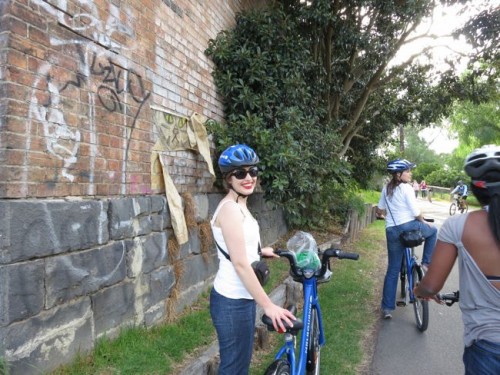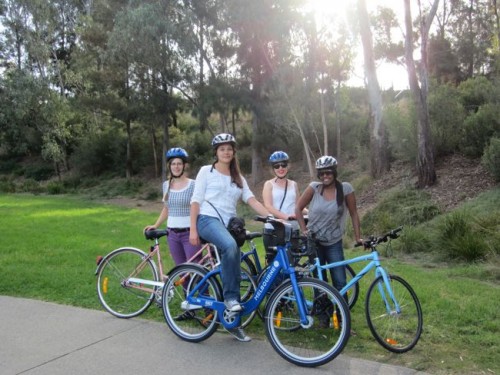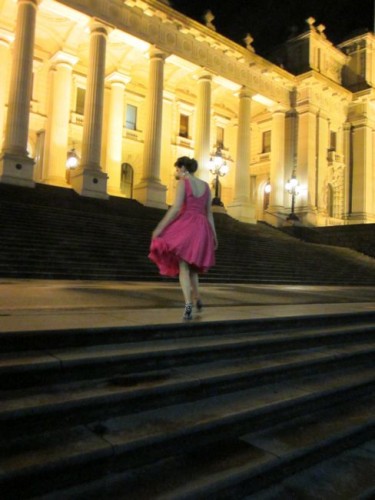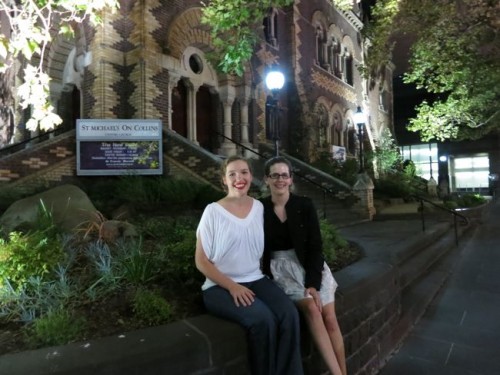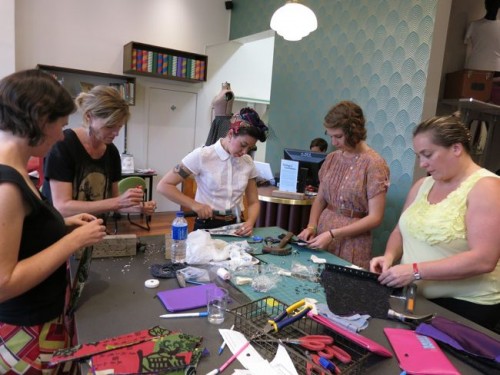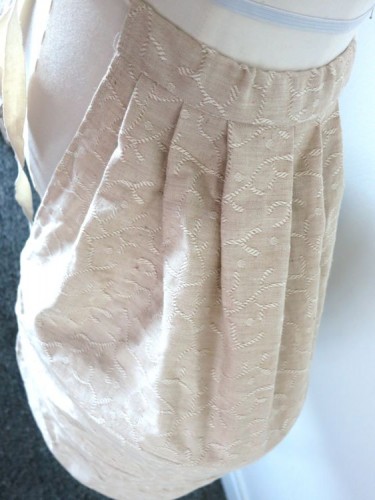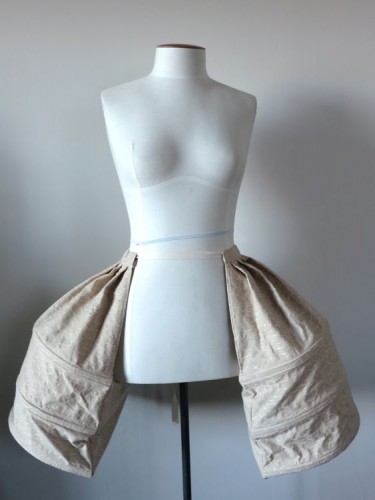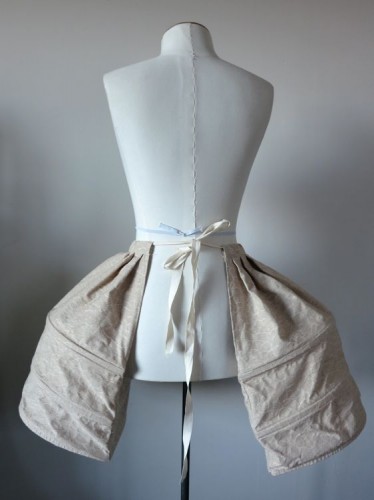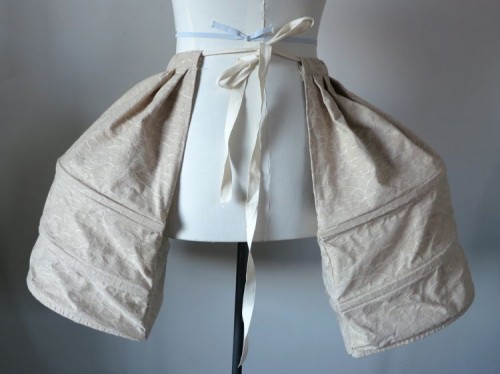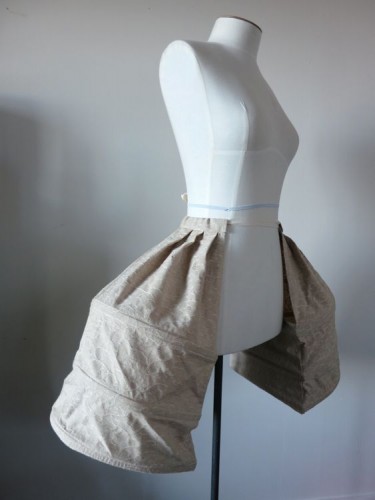I’ve told you lots about the Melbourne trip already, but I wanted to give you an overview of the week, with lots of pictures.
So what did I do?
Got lots of exercise:
Went to three shows in the Melbourne International Comedy Festival:
Ate lots of delicious food:
And, of course, went to concerts! I’ve already told you about Great Big Sea, but we also went to see Brian Setzer’s Rockabilly Riot. The show was great, but the audience was unenthused. They didn’t dress up, they didn’t dance, they barely bobbed their head. They applauded. They seemed to like it, but they just did’t get involved!
We dressed up of course. Catch me going to a rockabilly show and not dressing up! I managed to get Theresa’s hair into perfect Victory rolls, and wore my Love at First Flight dress.
And we danced! We bobbed up and down and tried to lead each other (man, I suck as a lead) until someone finally asked us to dance. And then another couple saw us and was brave enough to dance as well, but that was it. Audience of hundreds, and we were the only dancers! But hey, I’m not very brave, and I was brave enough to dance when no one else was – yay me!
I also helped Theresa and her flatmates do a massive clear-up in their garden. Why is housework and gardening always fun at other peoples houses, but not your own?
I also just wandered and explored the city, with Theresa, and alone, enjoying the architecture and the shops and parks.
And finally, of course, I taught a corset making workshop. More about that later.

